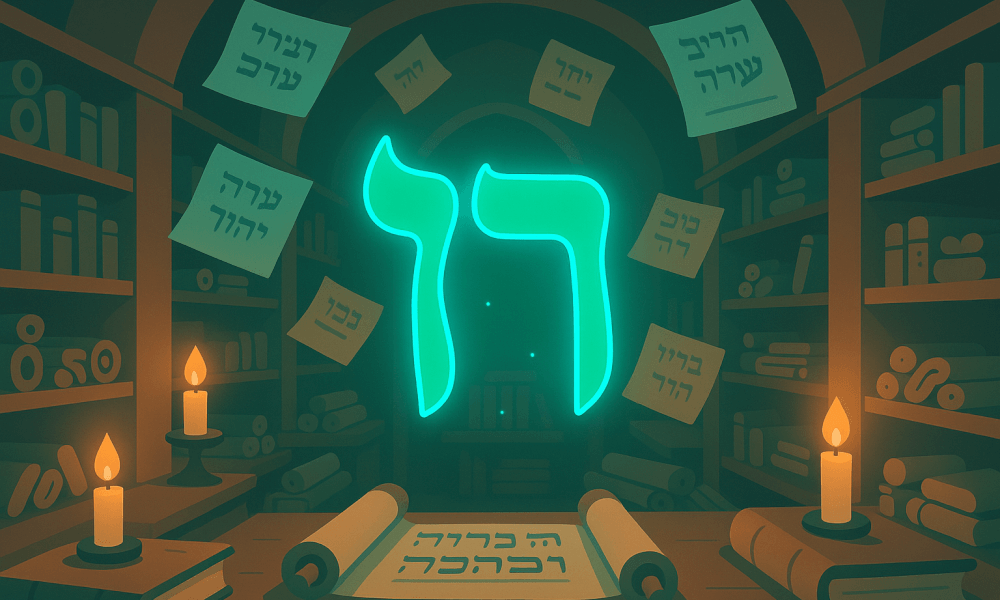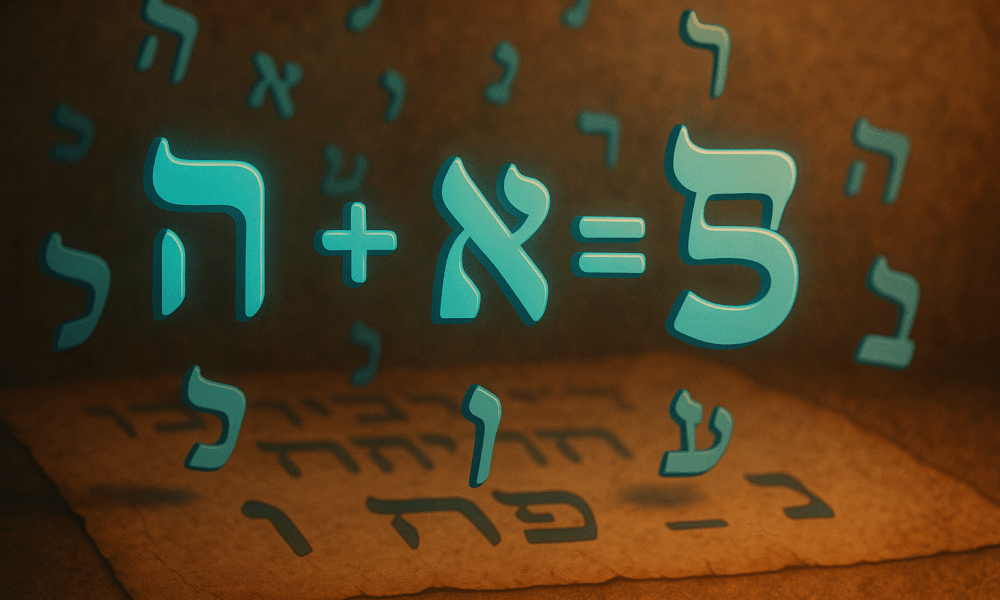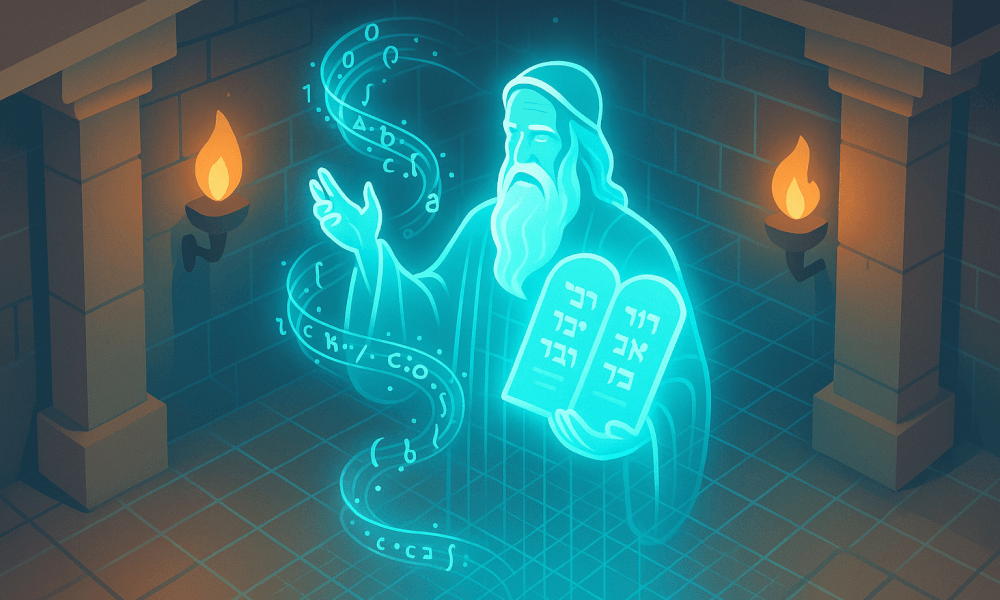Have you ever stumbled across the concept of Hebrew numbers and wondered what’s really going on there? Honestly, when I first heard about it, around a decade ago at a friend’s son’s Bar Mitzvah class (trying to keep up with the kids was humbling to say the least), I thought “Wait, letters as numbers—what is this wizardry?”
Turns out, it’s not just ancient quirky script; these numerals hold deep layers of spiritual insight and wisdom right inside our sacred texts. Imagine your favorite book has hidden numerical codes woven throughout its sentences—not as some Da Vinci-esque conspiracy theory (though that’s fun too), but rather as deliberate connections carrying timeless meaning.
Hebrew numerals bring that dynamic dimension to biblical studies through gematria—a fascinating practice where each letter doubles as a number.
Ready for an insightful stroll between language and math that’ll reveal some surprising patterns hiding in plain sight? Let’s dive in!
How Do Hebrew Numbers Connect to Biblical Mathematics?
Introduction to the Hebrew Numeric System
Have you ever wondered why certain numbers hold such mystical significance in Jewish tradition? The Hebrew numeric system is truly fascinating – it’s not just about counting, but about connecting to our sacred texts on a deeper level.
This quasi-decimal alphabetic system uses the letters of our Hebrew alphabet to represent numbers, with each letter corresponding to a specific value. Aleph through Tet represent 1-9, Yud through Tzadi represent 10-90, and Kuf through Tav represent 100-400.
What makes this system unique is that it lacks a symbol for zero – something I find spiritually significant when discussing creation ex nihilo in my Torah classes. The ancient Hebrew numerals system was adapted from the Greek numeral system between 200-78 BCE, reflecting how our ancestors integrated mathematical concepts while maintaining our distinct theological worldview.
The Hebrew Alphabet and Its Numerical Values
Building on our introduction, the Hebrew alphabet forms the foundation of our numeric system through precise value assignment. Each letter serves dual purposes—both as a phonetic symbol and as a number.

The values progress systematically: Aleph (א) equals 1, Bet (ב) equals 2, continuing through Yud (י) at 10. Then the pattern shifts to tens: Kaf (כ) equals 20, Lamed (ל) equals 30, up to Tzadi (צ) at 90. The hundreds follow with Kuf (ק) equaling 100, Resh (ר) at 200, Shin (ש) at 300, and Tav (ת) representing 400. Some final letter forms carry additional values up to 900.
This dual nature of our letters creates a beautiful bridge between language and mathematics, allowing words to contain numerical significance beyond their literal meaning—a concept I often explore with my congregants when studying ancient texts and understanding Hebrew numbers and meanings.
How Hebrew Letters Represent Numbers (Gematria)
The mystical practice of gematria transforms our understanding of Torah by revealing hidden numerical patterns embedded within the text. Each Hebrew letter’s numeric value allows words to be interpreted not just phonetically but numerologically.
When we sum the values of letters in a word, we derive its gematria value, opening windows to deeper connections across seemingly unrelated concepts. For instance, the word חי (chai, meaning “life”) equals 18 (ח=8 + י=10), which is why donations in multiples of 18 are considered especially meaningful in our tradition. The Tetragrammaton (YHWH) equals 26, a number that appears throughout creation narratives.
I’ve witnessed countless moments of spiritual awakening in my study sessions when students discover these numerical relationships. The practice dates back to Talmudic times, where rabbis used gematria to uncover layers of meaning that enrich our understanding of sacred texts beyond their surface reading. This Jewish numerology system continues to provide spiritual insights for modern practitioners.
Writing and Reading Hebrew Numbers in Order
Understanding Hebrew numbers becomes much easier with clear guidelines on their traditional forms. Here’s an easy-to-follow breakdown:
- Start by learning the basic letter values: Aleph (א)=1 through Tav (ת)=400. These form the foundation of all Hebrew numeric writing.
- Write numbers from right to left, placing the largest value first. For example, 11 is written as יא (Yod-Aleph), with 10 before 1.
- Combine letters to form larger numbers by addition. For 123, write קכג (Kuf=100, Kaf=20, Gimel=3).
- Substitute numbers 15 and 16 with טו (9+6) and טז (9+7) instead of יה and יו to avoid writing God’s name.
- For numbers above 400, combine letters representing hundreds. For 500, write תק (Tav=400, Kuf=100).
- Add special marks for thousands or context clues when writing very large numbers.
- Remember that Hebrew numbers follow gendered forms in biblical contexts—something I emphasize to my Bar/Bat Mitzvah students when learning Torah portions with Hebrew numbers 1-20.
Practical Applications of Hebrew Numbers Today
Differences Between Masculine and Feminine Number Forms
When working with Hebrew numbers, understanding grammatical gender is essential for proper interpretation. This distinction between masculine and feminine forms adds precision to our sacred language:
| Feature | Masculine Form | Feminine Form |
|---|---|---|
| Usage | Used with feminine nouns | Used with masculine nouns |
| Example | שלושה ספרים (shlosha sefarim)—three books | שלוש מצוות (shalosh mitzvot)—three commandments |
| Pattern | Often ends with ה (heh) | Often lacks the final ה |
| Number “two” | שניים (shnayim) | שתיים (shtayim) |
| Exceptions | Number 1: אחד (echad) | Number 1: אחת (achat) |
This gender reversal in Hebrew numbers sometimes confuses my students during Torah study sessions. However, it’s an excellent way to discuss the balanced duality within our language.

Common Uses of Hebrew Numbers in Modern and Biblical Contexts
Hebrew numbers connect ancient wisdom and contemporary Jewish life in remarkable ways. Synagogues use them to indicate pages in siddurim, chapters and verses in Torah, and counting of the omer between Passover and Shavuot. The Hebrew calendar also relies heavily on these numerals.
Modern Israeli society still employs Hebrew numerals for religious purposes, government documents, and ceremonial occasions, maintaining our living connection to ancient practices. Tools like Hebrew number converters available online have made this ancient system more accessible in today’s world.
Visual Charts of Hebrew Numbers (1-100/1000)
To facilitate Hebrew number studies, visual charts prove to be incredibly useful:
- Units (1-9): א=1, ב=2, ג=3, ד=4, ה=5, ו=6, ז=7, ח=8, ט=9
- Tens (10-90): י=10, כ=20, ל=30, מ=40, נ=50, ס=60, ע=70, פ=80, צ=90
- Hundreds (100-400): ק=100, ר=200, ש=300, ת=400
- For avoiding God’s name: טו=15, טז=16
- Thousands: א׳=1,000 (aleph with geresh), ב׳=2,000 (bet with geresh)
These numerical values help reveal hidden connections across biblical concepts.
Religious and Cultural Significance
Notable Symbolic Numeric Values (e.g., 18 – Chai, 613 – Mitzvot)
Hebrew numbers carry spiritual significance beyond mathematics. The number 18 (חי – chai) exemplifies this beautifully—composed of chet (8) and yud (10), spelling “life.” Donating in multiples of 18 is especially meaningful.
Likewise, 613 represents our mitzvot—365 negative commandments and 248 positive ones. These numeric connections reveal mathematical harmony underlying sacred texts.
Hebrew Numerals in Jewish Religious Practices
Hebrew numerals deeply intertwine with our traditional prayers and rituals—from counting the Omer to structuring liturgy and festival cycles. Understanding their numeric patterns enriches worshippers’ connections with Jewish spirituality.
Hebrew numbers are not just digits—they’re bridges connecting our heritage, spirituality, and identity. Whether through gematria insights or traditional numeric practices, Hebrew numbers offer timeless connections to Jewish traditions, adding personal meaning and vibrancy to modern life.



